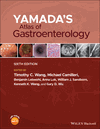Liver transplantation
Summary
This chapter offers diverse images that provide an overview of the liver transplantation and aims to provide a synopsis through pictures and illustrations rather than through text. The field of liver transplantation has grown exponentially, mainly owing to advances in surgical technique and immunosuppression and improved management of complications and postoperative infections. Although the outcomes for liver transplantation continue to improve, the field is limited by the availability of donor organs. In order to alleviate waitlist dropout, there has been increasing use of extended criteria donor (ECD) organs and living donor organs. ECD organs are those that confer some additional risk to the recipient such as a risk of illness transmission or risk of inferior initial or long-term function. A variety of disease conditions serve as indications for liver transplantation. The goal of the liver transplant evaluation is to identify patients who will most benefit from transplant and have the best chance for long-term survival.



